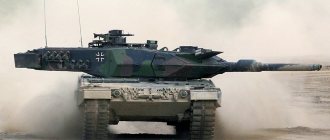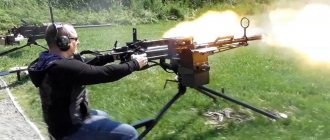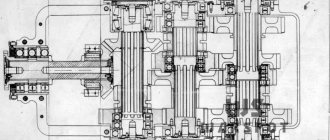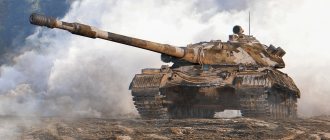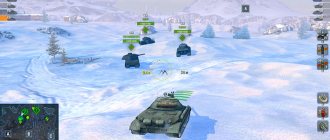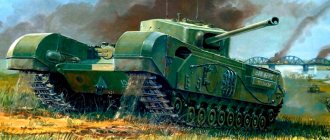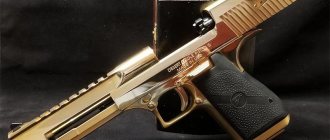Military technology has always interested people, even if they are not involved in this area. A variety of weapons are studied in terms of rate of fire, ease of use, penetrating power and other parameters. Almost every year people choose the most powerful tank in the world.
It is not surprising that such military equipment attracts attention. Such a multifunctional vehicle combines defensive properties and the ability to use artillery. Once inside, a person feels completely safe, although at the same time he is in one of the most effective types of weapons.
Merkava
The Merkava, which means “chariot” in Hebrew, is an Israeli tank, the first version of which was created in 1979. Later, several modifications were released, the last of which was the Merkava Mk.4. The tank owes its appearance to the fact that Great Britain refused to sell the Chieftain, which was in service in the sixties and seventies, to Israel.
A special feature of the Merkava is the location of the engine and transmission compartment. It is located in the front of the case. Thanks to this design element, crew protection has been enhanced. However, the tank has one more feature that is considered almost unique. The vehicle has a compartment for transporting wounded or landing troops, although it is also used for additional ammunition.
As a result of a number of design solutions, the Merkava is capable of performing various tasks. Depending on the situation, the tank can play the role of an infantry fighting vehicle, an armored personnel carrier or a tactical element. The main weapon is the M68 rifled cannon, and the secondary weapon is a coaxial MAG machine gun.
The most honest tank rating. Part 1
Don't look down the barrel of a loaded tank
Lords of the Battlefield... Since their first triumph in 1916, hundreds of thousands of armored tracked vehicles have carved their deadly path on the battlefield. Today it is impossible to imagine any military conflict without the participation of tanks - despite the continuous progress of anti-tank weapons, a more reliable means of covering infantry than heavy armored vehicles has not yet been found.
There are different types of tanks - some are big and scary, some are small, but also scary. The American TV channel Military Channel has compiled a rating of the 10 most formidable tanks in the world, each of which has left its bright mark on military history. Of course, searching for the “best tank” among thousands of designs from different periods of the twentieth century is a pointless and thankless task. A tank is an anthropotechnical system in which the characteristics of the vehicle do not always play a leading role; too much depends on the “human factor” - on the training and morale of the tank crew, and therefore on such subtle nuances as ergonomics or the quality of optical instruments.
The tactics of using armored vehicles and their compliance with the theater of military operations are of considerable importance. For example, the odious first-generation Merkava would have turned into an awkward barn on the East European Plain, but this hybrid of a tank and an infantry fighting vehicle turned out to be most suitable for the conditions of the endless Arab-Israeli conflict. It is no coincidence that I made a clarification about the “first generation” of the Merkav - one of the most important criteria for the perfection of a tank’s design is its modernization potential. The fourth generation of the Israeli vehicle has turned into a balanced main battle tank, in no way inferior in capabilities to the world's best analogues. Most of the legendary tanks went the same way. T-34 manufactured in 1940 and T-34-85. What do the British Centurion and its Israeli version Shot Kal Dalet have in common? The M1 Abrams of 1980 and the modern M1A2 SEP are just as strikingly different.
The only thing that experts are absolutely right about is the psychological impact that a tank has on its opponents. The ominous shadows of the “Tigers” and “Panthers” still wander in the people’s memory of the Great Patriotic War. A good tank must take part in the battle and scare the enemy. This explains the absence of many Soviet tanks in the Discovery rating. The armies that used Soviet weapons were defeated every time, by chance. Therefore, despite the excellent combat characteristics, Soviet armored vehicles received a rather controversial assessment in NATO countries. Based on this “inadequate” rating, we will try to analyze the main misconceptions of the “experts” of the Discovery Channel and, for sure, will learn a lot of new things on the topic of armored vehicles.
10th place - M4 Sherman
Medium tank. Combat weight: 30 tons. Frontal armor thickness: 51-108 mm. Armament: 75 mm rifled gun, 12.7 mm machine gun, two 7.62 mm machine guns. Engine power (mod. M4A1) - 395 hp. Speed on the highway is 40 km/h. Crew 5 people
By the time of entry into World War II, the US Armed Forces had three hundred obsolete M2 and M3 tanks. By the fall of 1945, American industry had mastered the production of 130 thousand armored vehicles, of which 49,200 were M4 medium tanks.
“Sherman” became the standard of pragmatism: the ground forces received tanks with a gasoline engine, at the same time, a diesel modification M4A2 was developed for the Marine Corps (it was this that was supplied to the USSR under Lend-Lease) - the designers rightly decided that this would facilitate the supply of troops . Based on the basic model of the tank, countless modifications were developed to competently solve each specific problem. Panzerwaffe ambush discovered? "Fireflies" are moving forward - killers of "Tigers" and "Panthers" based on the M4 with a British 17-pounder cannon. The amphibious Duplex Drive and the destructive Calliope MLRS (60-barreled Katyushas on an armored Sherman tank chassis) were developed. There were Sherman Crab minesweepers for making passages in minefields, as well as six types of self-propelled artillery mounts and seven types of armored repair and recovery vehicles based on the Sherman.
The Sherman was the first tank equipped with a hydraulic turret drive (which ensured high pointing accuracy) and a gun stabilizer in the vertical plane - tankers admitted that in a duel situation their shot was always the first. Another advantage of the Sherman, not noted in the tabular performance characteristics, was low noise, which made it possible to use the tank in operations where stealth was required (the roar and clang of the T-34 could be heard many kilometers away at night). Of course, a mass-produced product, like the T-34, was inferior in open battle to the highly protected German monsters, assembled in almost single copies. To avoid a drop in morale, Shermans destroyed by Tiger shells were forbidden to be opened in active units - this was done by special teams in the rear. Again this notorious pragmatism...
M51 "Super Sherman" with a 90 mm gun
Discovery still found a “flaw” in the M4 - a gasoline engine. Allegedly, this had a critical impact on the survivability of the tank. What can be said here? The would-be experts seem to have been inspired by the “yellow press” rather than serious research on this topic. The well-known misconception “our BT tanks burned like matches” is based on the memoirs of Soviet military leaders who made excuses for the high losses of the summer of 1941 (this despite the fact that all Wehrmacht tanks, without exception, were equipped with carburetor internal combustion engines). The myth about the extreme fire hazard of gasoline engines is supported by our personal experience - gasoline burns much more efficiently than diesel fuel. But the well-known trick of extinguishing a torch in a bucket with diesel fuel cannot serve as objective evidence - in battle, no one sets fire to a fuel tank with a torch; they hit it with a red-hot blank at supersonic speed. At the same time, such a colossal amount of thermal energy is released that both high-octane gasoline and heavy fractions of oil will flare up with an unbearably bright light, turning the tank into a charred pile of metal in a matter of seconds. Finally, for the most stubborn skeptics, a third of all Shermans were produced with diesel engines.
So it remains unclear why the M4 Sherman took last place in the ranking - this is one of the best combat vehicles of the twentieth century, plowing the sands of the Sahara and Sinai, the tropical islands of Oceania and the icy Russian expanses with its tracks.
9th place – “Merkava”
Main battle tank. Combat weight – 70 tons*. Steel spaced modular armor, using dynamic and active protection, is equivalent to 480 mm steel homogeneous armor. Armament: 120 mm smoothbore gun, 2-3 machine guns. Engine power 1500 hp Speed on the highway is 64 km/h. Crew 4 people + 6 paratroopers. *the given performance characteristics correspond to the Merkava Mk.4
The IDF's "chariot" was born in hot tank battles, and not on the drawing boards of design bureaus. The tank became the embodiment of the ideas of Israeli tank crews, who by that time had gained enormous combat experience in four wars in the Middle East. In principle, the appearance of the Merkava was a simple accident - the Israeli army was accustomed to using any foreign equipment, but the sudden refusal of Great Britain to sell Chieftain tanks confronted Israel with the task of creating its own combat vehicle, the characteristics of which would best meet the requirements of the Middle Eastern conflicts.
The development of the promising tank was led by experienced General Israel Tal. The Merkava was based on two concepts, the first of which: “the life of the crew above all else” led to a completely original layout of the tank with a front-mounted engine compartment. It no longer matters that the frontal armor is pierced and the power plant is destroyed - the tankers are reliably protected by a multi-meter layer of metal - after all, not a single sub-caliber projectile with a uranium core is capable of penetrating two 76 mm layers of spaced armor and the huge 12-cylinder diesel engine installed behind them. Moreover, the MTO is separated from the fighting compartment by an additional armored bulkhead (all data for the first generation Merkava).
The spacious fighting compartment is designed to carry six paratroopers, which turns the Merkava into a universal combat vehicle that combines the capabilities of a main battle tank and an infantry fighting vehicle. The original 600 mm wide aft hatch for dismounting troops helps, if necessary, to quickly leave a damaged vehicle, and its dimensions allow you to pull a seriously wounded soldier out of the tank. The second concept of the Israeli vehicle sounds like a “tank house”. The Merkava is perhaps the only tank in the world that spends most of its time not at storage bases, but on the front line - hence the desire of the Israel Defense Forces to make the tank as suitable as possible for long-term crew stays.
Who said that Merkava is afraid of dirt?
An objective assessment of the Merkava is best seen from the results of combat use. During the Second Lebanon War, out of 400 Merkavas of all modifications, 46 were damaged, while not a single tank caught fire. Of all the damaged cars, only five were beyond repair.
Obviously, a tank that has been repeatedly tested in battle with an original design and special capabilities is worthy of a higher rating than the one that Discovery awarded it. The would-be experts again found a “shortcoming” - the small number of cars produced. It seems that the Discovery Channel is new to geography - do you think 2,000 Merkava tanks are enough for a country smaller than the Moscow region?
8th place – T-54/55 Family
Medium tank.
Combat weight - 36 tons. Frontal armor thickness: 100 mm. Armament: 100 mm rifled cannon, 3 machine guns. Engine power 500 hp Speed on the highway is 50 km/h. Crew 4 people. 95 thousand tanks. 70 countries of the world. 30 wars in 75 years. Under the tracks of these tanks, the paving stones on Red Square shook, and with it the whole world shook in time. The T-54/55 family of vehicles remains the most famous type of Soviet tank in the West, mainly due to the alarming number of these vehicles. Twenty thousand steel Russian monsters stationed in Eastern Europe were ready at any moment to make a forced march to La Mache. The NATO command understood that in the event of war, Europe would be lost in a week, the Russians would crush two armored divisions of the US Army like a crumpled newspaper in a hurricane. It was necessary to place nuclear land mines under the dams in order, if necessary, to flood half of Europe and slow down the advance of the T-54/55 steel wedges.
Canonical image of T-54/55. Saigon, 1975
Technically, the T-54/55 tanks continue the glorious traditions of the T-34. Thanks to the transverse arrangement of the engine and the reduction in the dimensions of the aft MTO, it was possible to move the turret closer to the middle of the hull - the load on the front rollers was reduced, which made it possible to strengthen the frontal armor to 100 mm (all these changes were carried out during the development of the “transitional” T-44 tank), The caliber of the gun was increased to 100 mm, and modern surveillance and communication systems appeared.
In 1947, the T-54 went into production, and in 1958 it was replaced by the T-55, the main difference of which was the ability to operate in a global nuclear war. How to make a sealed tank? Caulk every crack? No, you just need to constantly maintain a higher pressure inside the tank, which will prevent radioactive dust and toxic substances from getting inside. The inner surface of the armor also had a special lining that protected the crew from deadly radiation rays. In 1959, China entered the production race, churning out countless numbers of these simple and reliable machines over three decades.
T-54/55 are still fighting on all continents, attacking, defending, destroying, burning, exploding, retreating, winning... i.e. They do everything that a real tank should do. Unfortunately, in the West they are better known as a symbol of Saddam Hussein’s army, which died ingloriously in the sands of Mesopotamia. The only reason to respect the T-54/55 is the number of tanks produced, Discovery’s false experts conclude.
Heavy armored personnel carriers "Akhzarit"
Despite Discovery's contempt for old Soviet technology, the Israel Defense Forces until recently used several hundred T-54/55 tanks. About 500 more tanks captured from the Arabs were converted into first-class Akhzarit armored personnel carriers.
7th place – Challenger 2
Main battle tank. Combat weight - 62.5 tons. Chobham combined armor, reinforced with ROMOR dynamic protection. Armament: 120 mm rifled cannon, 2 machine guns. Engine power 1200 hp Speed on the highway is 56 km/h. Crew 4 people.
An attempt in the 1950s to abandon heavy armor in favor of mobility did not bring success - well-protected tanks acted confidently on the battlefield, while the light French AMX-13 was forced to look for natural cover and was afraid to approach enemy positions. Unlike the French, the British did everything right - the thick-bellied Chieftain served faithfully for half a century, 1000 tanks of this type proved their high combat qualities in the Iran-Iraq War. In the 1980s, the UK adopted a new generation of armored vehicles - the invulnerable Challengers, none of which were lost during the Gulf War (there is some evidence that the UK Armed Forces budget for 1992 included the purchase two turrets for Challenger tanks, which indicates, if not destruction, then serious damage to two vehicles). In 1993, another supertank, the Challenger 2, appeared, which, according to the British, is the most protected tank in the world. Also, the Challenger lays claim to the longest artillery shot - an Iraqi T-55 was shot down from a distance of 5,300 meters.
Two turtles
During the invasion of Iraq in 2003, out of 120 Challenger 2 tanks, the British Army lost one vehicle - according to the command, in the heat of battle the tank came under “friendly fire” from its own unit, killing 2 crew members. In 2007, another Challenger was seriously damaged - its frontal armor was pierced by a shot from a conventional RPG! Surprisingly, there were no casualties. Despite the appearance of numerous caustic remarks about the tank’s security and the obligatory presence of “weak points,” there is still reason to believe that, in general, the security of the Challenger 2 is the standard for modern tracked combat vehicles. For example, one of the British tanks withstood 15 hits from anti-tank grenade launchers without breaking through the armor.
In 2008, the modernization of Challenger 2 began: a 1,500 hp diesel engine, a new automatic transmission, new weapons and... air conditioning were installed on the tanks. A beautiful, strong vehicle rightfully takes its place in the top ten best tanks in the world. Alas, only 422 of these first-class tracked vehicles are in service with the UK and Oman.
6th place – Panzerkampfwagen IV
Medium tank.
Combat weight - 25 tons. Frontal armor thickness: 50 mm (80 mm starting from mod. Ausf.G). Armament: 75 mm rifled cannon, 2 machine guns. Engine power 300 hp Speed on the highway is 40 km/h. Crew 5 people. The Wehrmacht's most massive tank was designed according to the conditions of a "lightning war" - a brilliant idea of the German General Staff. The European countries, having tasted the German Blitzkrieg, capitulated a month later, Guderian's tank wedges destroyed everything in their path, depriving the enemy of any hope of salvation.
Discovery is wrong again. The T-IV had little to do with the Blitz; on June 22, 1941, the Germans had only 400 T-IVs, which was less than 10% of the total number of tanks involved in Operation Barbarossa. At that time, the main forces of the Panzerwaffe were light vehicles T-II, T-III and PzKpfw 38(t) captured in Czechoslovakia. The real story of the T-IV tank is not the Blitzkrieg, but a terrible bloodbath on the Russian-German front with a tragic ending for the Germans. It was for the period 1942-1944. the main rate of production of the “fours” fell, which, even with the advent of the “Tigers” and “Panthers,” remained the “workhorses” of the Panzerwaffe until the end of the war.
From a technical point of view, the T-IV was a continuously improving combat vehicle, created in the best traditions of the German school of tank building. With its own advantages and disadvantages. Excellent optics, a radio station, a front-mounted transmission, which increased the reliability of control and simplified the work of the driver (at the same time, the presence of a long cardan increased the height of the tank), many technological hatches for quick access to the components and mechanisms of the tracked vehicle, and the ergonomics of the fighting compartment thought out to the smallest detail. Already by 1942, the T-IV was equal in design perfection to the T-34, surpassing the latter in firepower and security. The thickness of the frontal armor increased to 80 mm; instead of the short-barreled gun, a new long-barreled 75 mm KwK 40 L/43 gun was installed, which already posed a considerable threat to enemy tanks. On the basis of the “four”, a number of successful vehicles were created - self-propelled guns Stug IV and Brummber with a 150 mm howitzer, tank destroyers Nashorn and Jagdpanzer IV, as well as several self-propelled anti-aircraft guns.
Jagdpanzer IV
There are still heated debates: whether the T-IV, with proper modernization, was capable of replacing the “Panther” - a tank of a completely different level. The diameter of the Panther turret ring corresponded to the T-IV, the dimensions of the engine compartment of the Quartet made it possible to install an engine of increased power, the armor of both tanks was identical (of course, we are talking about later modifications of the T-IV). The production technology of the “four” was perfected to the smallest detail, at the same time, German industry faced difficulties in the production of the “Panther”: the “raw” design of the new tank suffered from numerous “childhood diseases”, the diseases were complicated by the lack of necessary raw materials, alloying additives and labor . It is logical to assume that instead of establishing production of a new tank in the heat of war, it was much more effective to modernize the well-known “four” and increase its production volumes. Although... what did it matter? The Third Reich could only be saved from defeat by an atomic bomb, but even here Germany was 10 years behind.
It is noteworthy that the T-IV was practically the only tank of the Third Reich that was used after the war, the invincible Tiger and the complex Panther were not at all interested in the winners. The “Quartet” remained in service with European armies for a long time and even managed to fight in Palestine in 1967. Tanks are created for war, not for parades. Despite the outward unsightliness of the T-IV, we must pay tribute to the veteran - seven thousand tanks of this type remained on the battlefields. None of the modern vehicles has such a bright and tragic combat history.
To be continued…
K2 "Black Panther"
This main battle tank was adopted by South Korea in 2014. It was intended to replace the US M14 medium tanks, which had been in use since the fifties. The Korean armed forces initially intended to purchase just under 700 tanks, but due to a shortage of funds, only 297 Black Panthers were purchased. Moreover, the cost of each of them was more than eight million dollars, which made them the most expensive in the whole world.
All electronic systems of the vehicle are integrated using the tank information and control system, abbreviated as TIUS. Automated control is provided by a special combat information and control system. A tank gun is installed, the barrel length of which is 55 calibers. An active protection complex with a thermal imager and three-dimensional radar is used.
Pre-tank era
The design of the first prototype of the tank was proposed in 1874 by the French designer Edouard Bouillen. He came up with the idea of an all-terrain train that would move due to the railway built into it. The military model consisted of 8 sections with 12 guns on the hull. Unfortunately, at that time it was not possible to implement such a project.
Another project was put forward by engineer V.D. Mendeleev in 1916. He designed a model of an armored vehicle with a large-caliber cannon and a machine gun. The project turned out to be difficult to produce and did not interest the Russian government.
PT-91 Twardy
The Polish tank called RT-91 was created on the basis of the most popular second-generation battle tank of the USSR, the T-72 Ural. The first versions appeared in the early nineties, but serial production began in 1995. Later, a number of modifications with upgrade packages were released, as well as armored vehicles and a prototype anti-aircraft gun based on the RT-91.
The tank is equipped with a smooth-bore weapon with a 125 mm caliber and active armor, which significantly reduces the amount of damage from the first enemy shot. The design includes three machine guns, thanks to which the RT-91 works well at close and medium distances. It is used to destroy anti-aircraft guns.
T-90
The Russian tank, known as the Vladimir, appeared in the late eighties, but was put into service later, in 1992. The chief designer was Vladimir Ivanovich Potkin, who died in 1999. After this, the Russian government assigned a verbal name to this tank.
For about ten years, the vehicle was considered the best-selling main battle tank. However, supply costs subsequently began to increase. If in 2010 they amounted to seventy million rubles, then in 2011 the figure rose to 118 million, which led to the cessation of purchases.
The tank is capable of hitting targets on the move at a distance of up to five kilometers, even if the battle is fought by an inexperienced person. Master Gunners perform significantly better in both speed and distance. Guidance is carried out using the 1A43 complex, which includes automatic sensors for firing conditions, a ballistic computer and a guidance device.
M1A2 SEPv2 (USA)
Of the many tanks, this tank has the most military experience. It has been used since 1980, but if you think that this model is already old and worthless, you are mistaken, it is constantly updated and modernized. The tank fires from a 120 mm smoothbore cannon, which is suitable for all types of shells, so this tank can hit any target and penetrate any armor. Protected by M1A2 SEPv2 laminated steel composite. To create this tank, they even use depleted uranium, which has a very high density and is practically impossible to penetrate. Also, this tank uses the latest technologies - the best thermal imagers and GPS navigation systems. We left the most interesting fact for dessert - the tank has a remote control.
Weight - 63.1 tons
Maximum
speed - 66.8 km/h
Crew - 4 people
Engine power - 1500 hp.
Type-99
The Type-99 is a modern battle tank developed by China based on a series of third-generation prototypes called the Type 98. It is considered a development of the T-72 concept, the most produced second-generation battle tank created by the Soviet Union. Despite this, for China such a design is considered a breakthrough. In particular, in the Type-99 the weakened area near the hatch was reduced.
The designers strengthened the frontal protection by placing dynamic protection on top of the armor. Other parts were also improved, such as the rear turret niche. In addition to the first serial modification, China subsequently created a number of combat systems. For example, the Type 99A2 received a new information and control system, dynamic and active protection, as well as an integrated motion control system.
One Type-99 costs more than twenty-two million dollars. For all its lightness, the tank is armed with three machine guns (two against infantry and one against anti-aircraft guns), as well as a 125 mm smoothbore gun. The Type-99 is inferior to many vehicles in terms of target engagement range, but it does an excellent job of destroying anti-tank missiles.
Another reason why the Type-99 is included in the list of the most powerful tanks is its laser protection system. This unique technology, which is used only on Chinese vehicles, makes it possible to suppress signals from anti-tank missiles and also interfere with the targeting of other tanks.
BM Oplot
BM Oplot, which was called Oplot-M before being put into service, is a battle tank created on the territory of Ukraine. The placement of weapons, protection, chassis, crew and other elements is done in a classical manner. Thanks to the presence of an automatic loader, three people can be inside - the commander, the gunner and the driver. Each crew member has his own hatch for disembarkation and landing.
Among its peers, Oplot stands out:
- A system for accounting for the bending of the barrel bore;
- Modified fire control system;
- A panoramic sight that has night and day channels, as well as a laser range meter.
In terms of protection, the tank boasts a new welded turret shape, electro-optical active protection "Gate", as well as large side screens, making the chassis and hull better protected from hand-held anti-tank grenade launchers. The latest models of the Oplot BM are in many ways comparable to the T-90. This tank is capable of reaching speeds of up to seventy kilometers per hour.
Leclerc
The AMX-56 Leclerc is a French tank that was created in the late eighties as a replacement for France's main battle tank, the AMX-30. Leclerc was in serial production from 1992 to 2010. These machines are still in use, not only by France, but also by the United Arab Emirates.
For a long time, the Leclerc was recognized as the most expensive battle tank. He lost this title relatively recently, when modern vehicles like the Type 10 and K2 Black Panther were adopted. As in the case of the Oplot, a classic layout and a crew of three are used. Interestingly, the maximum height of a person to be in Leclerc is 182 cm, and the driver cannot be taller than 176 cm.
The cost of the AMX-56 is eight million dollars. At the same time, the tank is equipped with two machine guns with a magazine for four thousand rounds, as well as a 120-mm muzzle, the ammunition capacity of which is forty rounds. Leclerc is one or two kilometers higher than the speed developed by the Bulwark, and therefore is actively used against moving targets.
Type 10 (Japan)
Few people associate modern military equipment with Japan, but it was in Japan that this magnificent killing machine, the Type 10, was developed. It appeared on the combat arena in 2012.
The Land of the Rising Sun has outdone itself by developing this technically ingenious machine. The fire will be introduced from a 120 mm smoothbore gun, with an automatic loading system. The crew of the tank is three people. They are located in a part of the tank that is protected by nanocrystalline steel, this steel is three times stronger than regular steel. The tank is equipped with modern computers that monitor what is happening on the battlefield, which gives this tank a huge advantage over others. Weight - 44 tons
Maximum
speed - 70 km/h
Crew - 4 people
Engine power - 1200 hp.
MBT-2000
The tank, better known as Al-Khalid, was developed jointly by China and Pakistan. This is a second generation combat vehicle, which was put into service in 1997. Designs used during development were Type-96 and Type 90-II. The name Al-Khalid was given to the modification in honor of one of the companions of Muhammad named Khalid ibn al-Walid al-Makhzumi.
The vehicle is equipped with a modern fire control system, which is practically no different from that of the Leclerc. Al-Khalid also boasts a 125 mm smoothbore gun and French thermal imagers. Initially, it was planned to install French engines on the MBT-2000, but due to pressure from India and the United States, it was necessary to use Ukrainian 6TD-2.
Al-Khalid works equally effectively at any time of the day. The weapon is effective against almost all types of equipment, but its presence causes the refusal of one machine gun. In general, the tank combines elements of vehicles from different countries. For example, its chassis corresponds to the Soviet T-72M.
T-90AM (Russia)
This tank is often compared to its American counterpart, the Abrams, but according to experts, the American is still stronger. But the T-90 has nothing in common with American tank building; it is only a modernized model of the Soviet T-72 tank, which many countries still use in their combat arsenal. The T-90AM has improved characteristics compared to its predecessor: its turret can withstand an armor-piercing projectile, in addition, it has a missile search system and an anti-shock system. The main weapon is a 125 mm cannon.
Weight - 48 tons
Maximum
speed - 65 km/h
Crew - 3 people
Engine power - 1130 hp.
Challenger 2
The Challenger 2 is a British battle tank that is also in service with the Omani Army. The year of operation is considered to be 1995, and since then more than 400 Challenger 2 have been produced. According to expectations, the vehicles will be in use until at least 2035.
The tank is equipped with a 120-mm rifled gun, which is the successor to the Challenger and Chieftain guns. It is covered with a thermal insulating casing, chrome-plated, and cast L30A1 using the electroslag remelting method. The destruction range is eight kilometers.
Challenger 2 is included in the list of the best tanks in the world due to its reliability and effectiveness against foot soldiers. The main disadvantage of the car is considered to be poor mobility. The tank reaches a speed of no more than 56 kilometers per hour. But the armor can easily withstand about sixty direct hits from an RPG.
T-14 - the most powerful tank in the world
The Russian development based on the universal Armata platform is recognized as the most powerful tank in the world. This tank first saw the light of day in mid-2015, when about twenty vehicles were produced. Full mass production started in 2022. This process was accompanied by the elimination of identified deficiencies.
Artama was the first tank of its kind, which was created with an eye to the concept of Network-centric warfare. This means that the main task of the T-14 is reconnaissance, adjusting artillery and anti-aircraft fire, and target designation. For this purpose, the vehicle is equipped with a Doppler AFAR radar, as well as special ultraviolet HD cameras.
Suitability for reconnaissance is due to such design features as low visibility on radars. Moreover, the T-14 is difficult to distinguish even with visual contact. Another feature of Artama is the location of the crew in an armored capsule, and not in a turret. This allows people to survive even in conditions of tank detonation.
At the same time, the probability of detonation of the ammunition is very low, because the designers moved it to another location with excellent protection indicators. In addition, the T-14 is able to withstand hits from anti-tank shells thanks to the active protection of the Afghanit. Malachite armor resists fire from hand grenade launchers. To top it all off, the Armata develops enormous speed and is armed with a 125 mm gun and two machine guns.
Tiger
The German Tiger was intended primarily to attack enemy tanks. At least, this is the opinion that many Western historians now hold. At first, Germany’s strategic goal was to attack, then the situation was turned not in their favor, and armored vehicles were used to eliminate gaps in their own defense.
In its structure and functionality, it is felt that this is a means of fighting primarily against tanks; countering infantry is relegated to the background. Tigers could engage in battle with their own kind at a distance of more than two kilometers. This is impressive, although it is known that for combat it is better to get within a kilometer of each other. The Tigers could afford this without significantly suffering from an oncoming attack. The thickness of the side armor was 80 millimeters, the frontal part was 100 millimeters. This is one of the most powerful opponents that Soviet troops have ever had to deal with.



